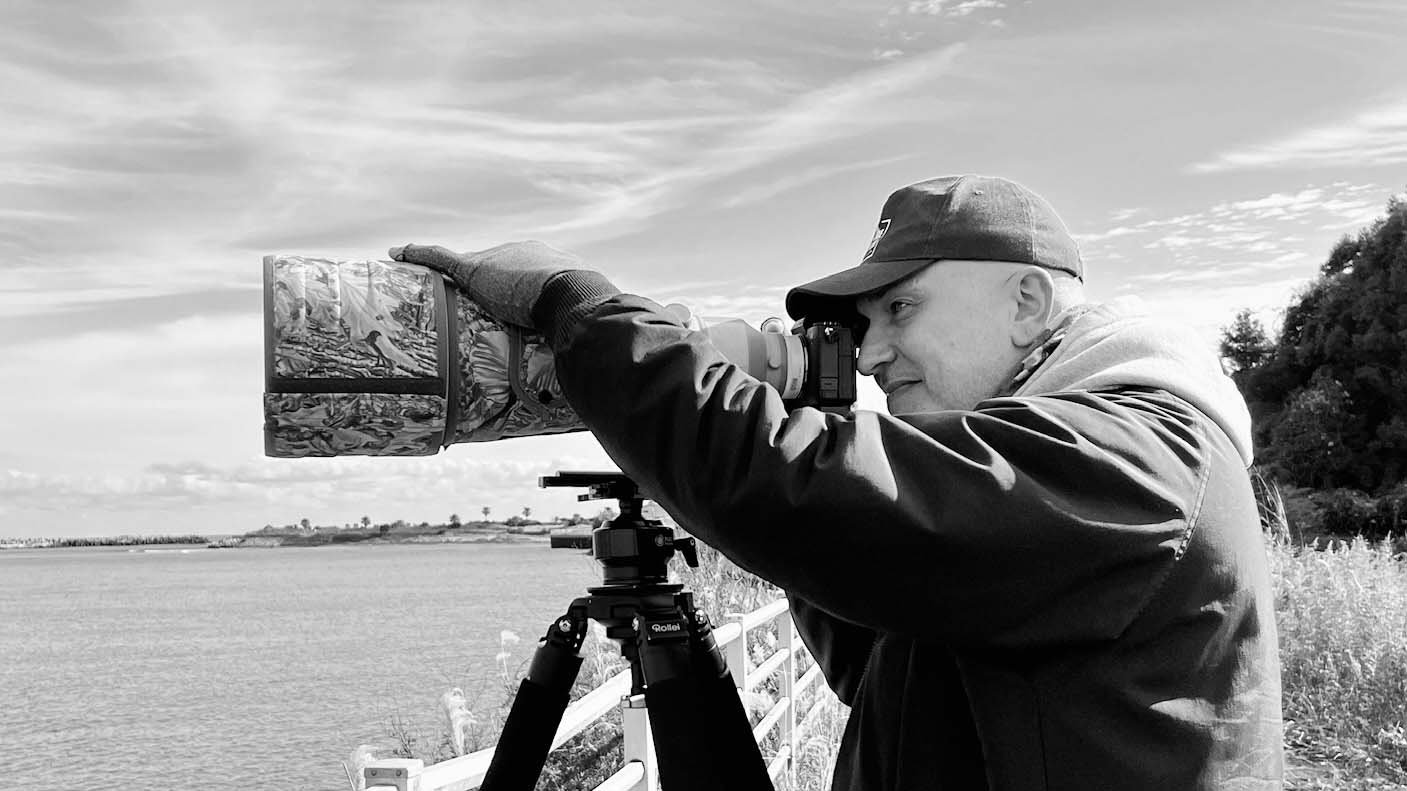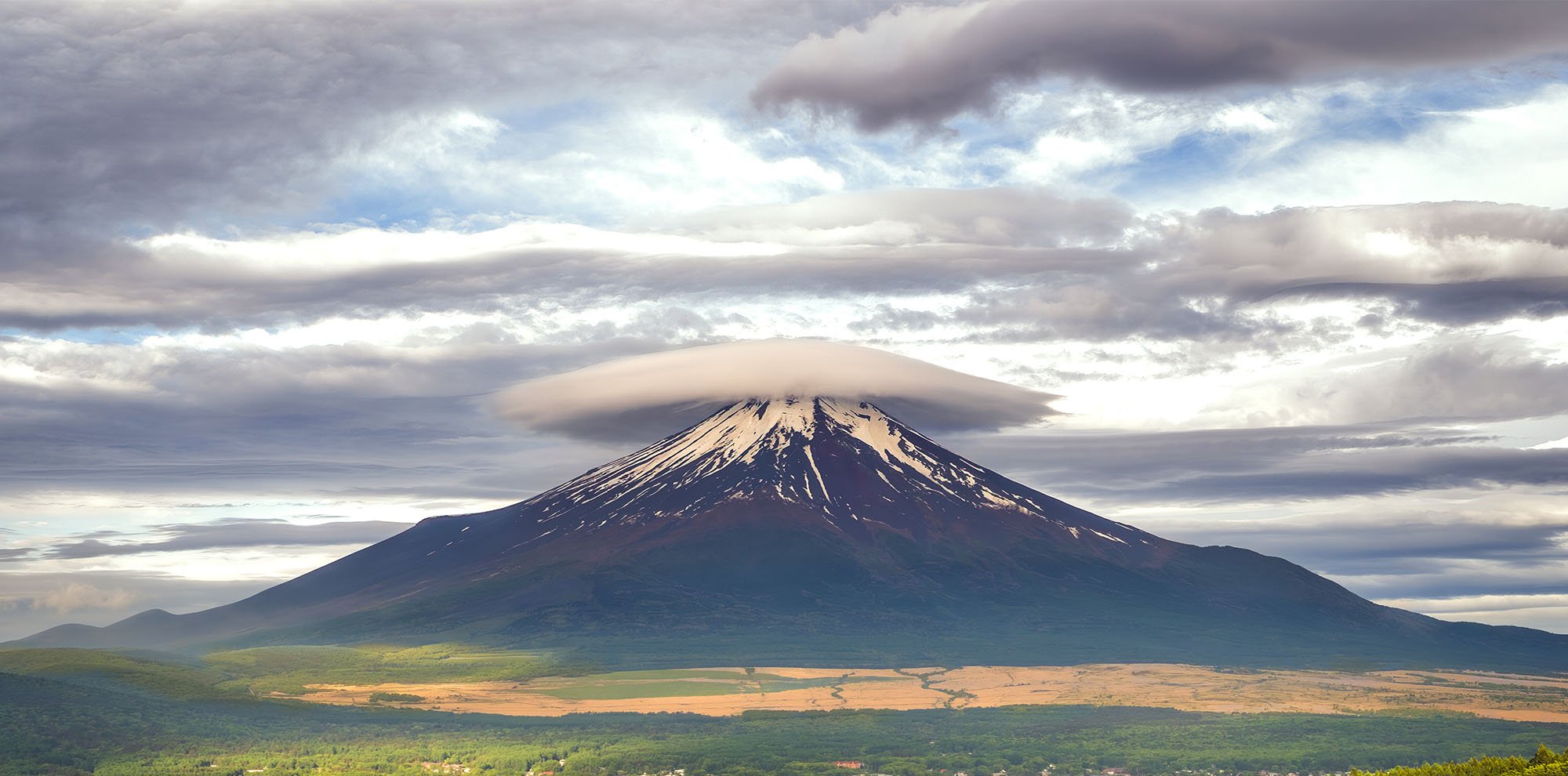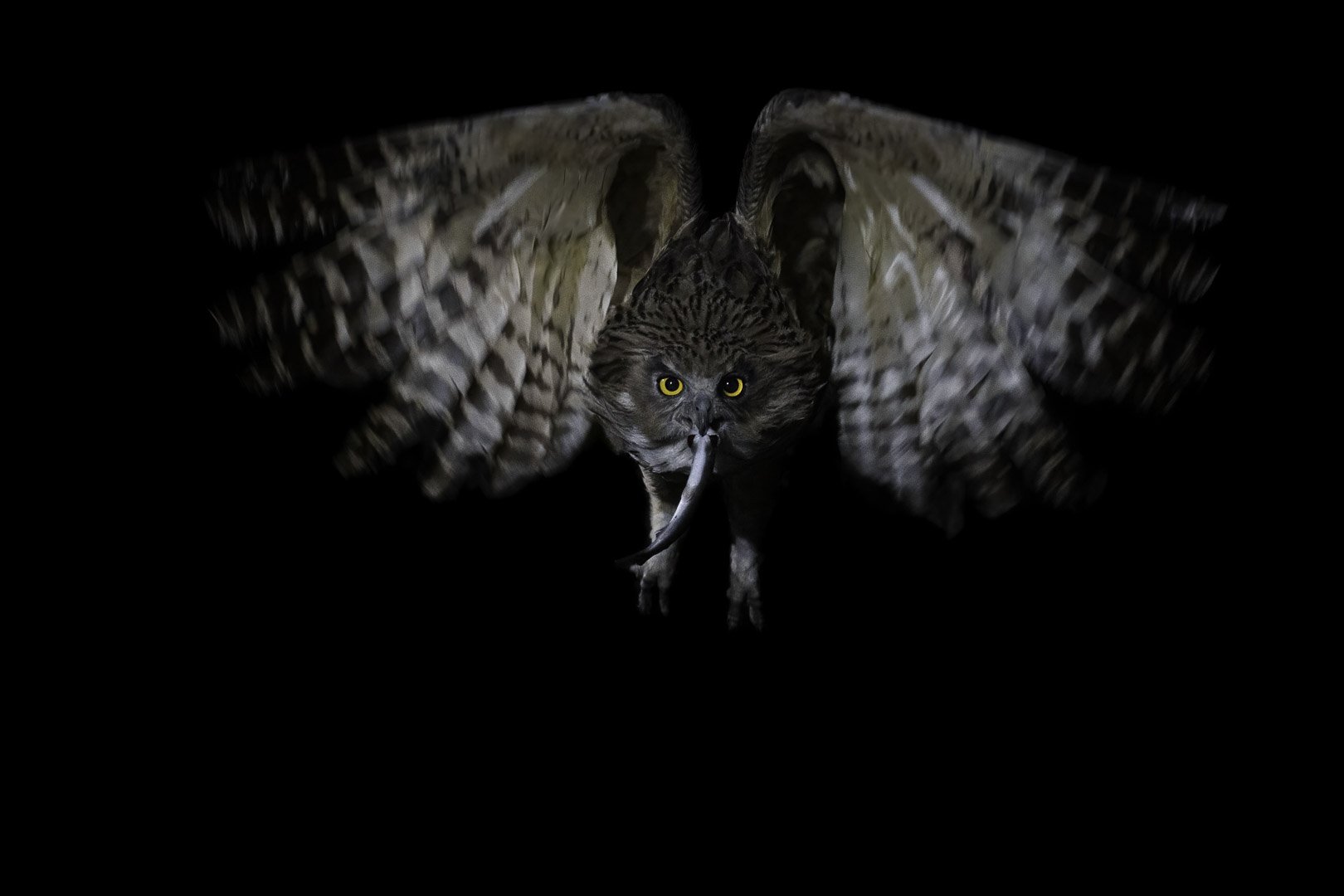Bird Photography on the Izu Peninsula
Izu Peninsula Bird Photography - Japanese Black paradise flycatcher (Terpsiphone atrocaudata)
The Izu Peninsula captivates visitors with its diverse nature, both underwater and on land. It offers a wide variety of natural formations and a wealth of activities for nature lovers. The peninsula is not only famous for its numerous Onsen, Japan’s renowned hot springs, but also for its impressive flora and fauna, ranging from mixed forests to exotic bird species. In this article, I describe my bird photography experience during my exploration of the Izu Peninsula. Everything you need to know about the Izu Peninsula can be found in the following article: Izu Peninsula in Shizuoka, Japan.
Which Bird Species Stand Out on the Izu Peninsula?
Our bird photography planning for the Izu Peninsula involved extensive research. Finding suitable locations with the relevant information initially proved to be a complex task. However, with the help of my wife, who gathered some useful information from photographers and bird watchers on Japanese websites, we were able to narrow down some areas. At the top of our photo list were the Japanese Black paradise flycatcher and the Siebold's Green Pigeon. However, unfamiliarity with the area and our limited time made finding and photographing these specific bird species particularly challenging. A guided birding tour would have been valuable assistance. Unfortunately, we discovered this option too late, so we couldn't take advantage of it.
Information about birding tours on Izu:
We found only one tour offered by a local. This tour was in Japanese, which posed a language barrier for non-Japanese speakers who would also like to use this option. Despite the challenges and initial difficulties, we were able to photograph both the Black paradise flycatcher, and Siebold's Green Pigeon, along with more bird species than expected during our trip.
But let's start from the beginning.
We had accommodation in a small fishing village, right on the Pacific Ocean. The lodging was situated on a densely vegetated hillside. Fortunately for us, the building also had a large rooftop terrace. There, we could enjoy grilling delicious food while taking in the view of the endless horizon. Additionally, the vegetated hillside on which the building was constructed even allowed us to photograph birds directly from the property. The rooftop terrace was at the same height as some treetops, which increased the chance of photographing birds at eye level. To my delight, our accommodation was already perfectly suited for capturing some bird images.
On the first day, we were able to identify several birds by their songs. For some, we had to do a bit of research, like the Blue Rock Thrush (Monticola solitarius), a bird species that was unknown to me until then. A very interesting and beautiful bird, but more on that later.
Bird Species You Can Photograph on the Izu Peninsula
The Japanese bush warbler (Horornis diphone)
A bird that enchanted me with its strong and melodic song was the Japanese Bush Warbler. Unfortunately, I couldn't manage to photograph this bird. Although it is widespread throughout the Izu Peninsula and its song could be heard from afar, it was very shy and difficult to spot in the lush green trees and shrubs. There was a moment when the small and nimble bird appeared in an acceptable position and distance. Unfortunately, my autofocus struggled to focus due to the dense foliage. Additionally, my lack of preparation played a role in my failure. I wasn't expecting it at that moment – the classic mistake.
However, I was able to record its beautiful song. To give you an idea of how loud the song of the Japanese Bush Warbler is, I can tell you that I made the recordings with just my iPhone. Anyone who has ever made a recording with their smartphone's dictation function knows that it only works well if the sound source is close to the microphone or correspondingly loud. The bird was approximately 15 to 20 meters away when I made the recording.
In the following audio file, you can listen to the melodic and powerful song of the Japanese Bush Warbler:
For the Japanese, the song of the Japanese Bush Warbler symbolizes the beginning of spring. The bird is also called "Harutsugedori" or "The Bird that Announces Spring." This is because at the start of spring, you can hear their distinctive, strong breeding song, which is considered a sing of the true beginning of spring in Japan.
Warbling white-eye (Zosterops japonicus) - Sony A1 + 400 mm f2.8
The Warbling white-eye (Zosterops japonicus)
Another bird that our rooftop terrace offered for a photo opportunity was the Japanese White-eye. This bird is one of my favorite birds in Japan and is a tiny, agile fellow. Its curiosity allowed me to photograph and film this beautiful little creature, even if only briefly.
For more information about the Japanese White-eye, you can check out my animal profile.
Blue rock thrush (Monticola solitarius) - Sony A1 + 400 mm f2.8
Blue Rock Thrush (Monticola solitarius)
Another bird that caught our attention during our first days at our Izu accommodation was the Blue Rock Thrush. This bird not only filled the air with its beautiful song, but was also a regular visitor to the dam, a wall that separated the small village from the Pacific Ocean. This dam could be seen directly from our living room and was about 15 meters away.
View from the rooftop terrace, at the bottom edge you can see the dam / wall that runs along the village
Understanding the Blue Rock Thrush: Behavior and Photography Tips
As always, when I discover a new species, I search for information to help me better understand the observed behavior. This is also beneficial later when it comes to capturing the desired photos.
Why does this bird keep returning to this wall?
The reason was quite simple: Food! The birds are perch hunters, which is why they sat on the wall and watched the surf for insects to swoop down on from their perch. Additionally, we noticed two distinctly different appearances between the sexes. Males and females vary greatly in their looks. The male features a plumage of blue, black, and red/orange, while the female has a more gray/brown-black coloration with light spots.
For me, this presented an excellent opportunity to photograph the birds directly from our holiday apartment, as they occasionally perched on one of the street lamps. Since the weather was mostly unsettled and rainy during the first two weeks, I used the light conditions for high-key shots. The male, with its bright colors, stood out particularly well.
However, I also wanted to capture a photo with better lighting conditions, which I managed to do a few days later in another part of the island.
The Blue Rock Thrush (Monticola solitarius) is, for me, an attractive bird species that should definitely not be overlooked during a photography tour on the peninsula.
Pacific reef heron (Egretta sacra) - Sony A1 + 400 mm f2.8
First Days of Bird Photography: Successes and New Discoveries
Pacific reef heron (Egretta sacra)
All in all, the first days went quite well in terms of photography. For the next bird species, which I could initially only observe, I had to do some research to identify it. Once again, our holiday apartment’s rooftop terrace turned out to be an advantage, as it allowed an easy view over the dam. There, I spotted a Pacific Reef Heron sitting on a rock jutting out of the Pacific Ocean, searching for food.
At first, I didn't take any photos, but it was interesting to learn about this heron species. Two weeks later, I got the opportunity to photograph this bird. Whenever we returned from our tours, before going into the house, I would grab my camera and look over the dam wall, hoping to spot the Pacific Reef Heron. I figured that the bird likely frequented this spot searching for food. Indeed, under overcast skies and light drizzle, I was able to photograph and briefly film the heron from the dam.
Unfortunately, I couldn't get to eye level with the bird, as it wasn't possible to reach the rocky beach by the sea. But in such cases, I'm not too concerned. I'm happy as long as I get a sharp image, even if the background isn't perfectly creamy.
A week later, I had another brief encounter under perfect lighting conditions at sunset, but unfortunately, I could only photograph the Pacific Reef Heron from the side and behind as it noticed me approaching and fled. This heron species was extremely shy.
Photographing Black paradise flycatcher: A Challenge in the Dense Forests of the Izu Peninsula
Black paradise flycatcher (Terpsiphone atrocaudata) — A1 + 400 mm f2.8
Black paradise flycatcher (Terpsiphone atrocaudata)
As mentioned at the beginning, the Japanese Black paradise flycatcher (Terpsiphone atrocaudata) was one of the bird species I definitely wanted to capture. Its appearance is simply fascinating. However, this task turned out to be extremely challenging because this bird prefers dense forests, making it difficult to locate. My wife and I spent numerous hours in various forested areas, always hoping to hear the distinctive song of this bird – unfortunately, to no avail. Extensive online research to possibly find precise information on a location was also unsuccessful.
But luck was on our side. During a visit to a remote Shinto shrine surrounded by an old, dense forest full of Japanese cedars, we heard the song of the Black paradise flycatcher. It was a happy and unexpected coincidence that finally allowed us to observe and photograph this fascinating bird. A true stroke of luck!
So, I decided to make another attempt early in the morning on another day with better light conditions. On the day I took the first photos, the sky was gray, and the bird stayed deeper in the dense forest. There was hardly any light available, and even with my 400 mm f2.8 lens, an ISO setting of 12800 was necessary. Therefore, I planned to return to the shrine under more favorable lighting conditions.
A few days later, the weather improved. We set out before sunrise, wrapping ourselves in camouflage ponchos and covering the camera with a camouflage net to improve our chances of getting the bird closer to the lens. The black paradise flycatcher, came near us – we could tell from its song – but it did not show itself. After three hours, we decided to give up and returned without a new photo. The first pictures I had taken remained the only ones I managed to get of this bird.
The photos didn't exactly match my expectations. But sometimes you have to look at things from a different perspective. It was a success. I had the opportunity to observe and photograph the Flycatcher, even though we didn't know where to best look for it. Some of you surely know the disappointment when the photo doesn't turn out as you envisioned. But it's important to recognize when you've achieved a success and enjoy it. We could have returned to Germany without a single photo or sighting of the bird.
The greatest challenge, aside from finding the location, is the low light in the dense forest, even on sunny days. Additionally, branches and shrubs can potentially introduce distracting elements into the picture. Those who are eager to learn more about this bird species can read about it here in my animal profile of the Black paradise flycatcher (Terpsiphone atrocaudata).
Red-billed leiothrix (Leiothrix lutea) – Sony A1 + 400 mm f2.8
Photographing the Red-billed Leiothrix: A Hike Through Izu's Mountain Landscape
Red-billed leiothrix (Leiothrix lutea)
During a hike at around 700 meters above sea level in the densely forested mountain landscape of Izu, I managed to take photos of a Red-billed Leiothrix (Leiothrix lutea) – a bird species that was also new to me. We observed two of these birds foraging for food. They seemed to have young ones and were gathering insects to feed them.
The challenge with this shot, unsurprisingly, was the lighting. Despite the bright sunshine, the forest provided significant protection from direct light, resulting in an ISO setting of 12800 for the photos. Additionally, photographing these small, nimble birds posed its challenge. A faster shutter speed was necessary, which was a task even with the 400 mm f2.8 lens.
The Red-billed Leiothrix (Leiothrix lutea) is a lively little bird that feels at home in the underbrush of dense forests. With its yellow-orange chest and distinctive red beak, it stands out immediately. Originally native to Asia, from eastern China to the Himalayas, this bird has also been introduced to regions like Hawaii, Japan, and parts of Europe. These beautiful, colorful birds are usually found in higher elevation areas and are less common in flat lowland plains.
Chinese hwamei or melodious laughingthrush (Garrulax canorus) - Sony A1 + 400 mm F2.8
Photographing the Chinese Hwamei: An Unexpected Encounter
Chinese hwamei (Garrulax canorus)
Another bird species we encountered by chance was the Chinese Hwamei (Garrulax canorus). This was an unexpected discovery one morning when I was photographing an intense sunrise from a mountain overlooking the sea. Early that morning, the air was filled with bird songs, so on the way back, I kept an eye out for birds. Suddenly, a loud bird song came from the side of my rolled-down car window. I stopped, and a few seconds later, a thrush-sized, orange-colored bird perched on a post by the roadside. This bird species was unfamiliar to me, and unfortunately, I couldn’t take a photo at that moment.
A bit disappointed, I drove on, and 300 meters further, I heard the same song again. I parked my car and walked with my camera in the direction from which the bird’s song was coming. Once again, I was lucky and managed to photograph the loud-voiced bird.
The Chinese Hwamei (Garrulax canorus) is a medium-sized bird, about the size of a thrush, and lives in dense forests and underbrush. It is recognizable by its reddish-brown color and the white “spectacles” around its eyes. Its song is loud, long, and varies between mimicking other birds, whistling, and hard tones that are often repeated. Originally from China and Taiwan, it can also be found in Japan and Hawaii, where it has been introduced.
On the last day in Izu, I managed to capture a photo of the White-bellied Green Pigeon (Treron sieboldii).
Due to the distance, the photo required a very strong crop - A1 + 400 mm + 1.4 TC F5
Highlight of Our Trip: The White-bellied Green Pigeon (Treron sieboldii)
A highlight of our trip was the White-bellied Green Pigeon (Treron sieboldii). I will write a separate article about this fascinating and daring bird because I managed to take numerous impressive photos and videos of it. There are also some interesting facts about this pigeon.
My wife brought this pigeon species to my attention. Normally, pigeons are not at the top of my bird photography list. However, this daring, almost fearless pigeon caught my interest not only because of its striking plumage and colorful eyes.
The White-bellied Green Pigeon has a unique habit during the breeding season: it flies to the sea and drinks salty seawater. It is believed that they balance their mineral levels this way. However, this behavior is risky, as they venture into potentially dangerous environments with rough seas to drink fresh seawater.
Our research indicated that this pigeon species could also be found in the area where we were staying. But finding them was like looking for a needle in a haystack. The pigeons do not live directly by the sea; they fly from the mountainous regions to the ocean in the morning and late afternoon to drink seawater. They are not like city pigeons that forage for food on the ground among people. Additionally, this pigeon species is wild and shy.
We found a spot where these birds were reportedly observable, but it was not part of the Izu Peninsula. This spot was closer to Yokohama and was on our way back to Tokyo, so we included it in our return route to try our luck.
As luck would have it, on our last evening, during a hike in the GEO Park on the Izu Peninsula, I managed to photograph the White-bellied Green Pigeon. It was a special stroke of luck. I spotted a pigeon-like shape at the top of a tree and jokingly said to my wife, “There sits the green pigeon.” When I looked at the photo on the camera, it turned out to be the Siebold's Green Pigeon. None of us had expected this outcome. It was truly fantastic.
More about the Siebold's Green Pigeon and its daring, action-packed behavior of drinking seawater can be found in a separate article. If you are keen to learn more about this pigeon species, I recommend my detailed animal profile on the Siebold's Green Pigeon (Treron sieboldii).
Black-eared Kite at Sunset — Sony A1 + 400 mm + 1.4 TC F5
Black-eared Kite (Milvus migrans lineatus)
The Black-eared Kite, also known as the "Schwarzmilan in German" is commonly seen in Japan. This bird is one of the largest subspecies of the Black Kite, which we also know in Germany. During our trip to the Izu Peninsula, I was able to take photos of this raptor at various locations. Compared to songbirds, it is relatively easy to observe and photograph this bird.
For more information, take a look at the profile on the Black-eared Kite (Milvus migrans lineatus).
GEO Park Jogasaki-Coast (城ヶ崎海岸) - Sony a7 RIV + Tamron 28 - 75 mm f2.8
Hiking and Further Observations on the Pacific Coast of the Izu Peninsula
Our additional bird observations on the Izu Peninsula in Japan took place during a hike along the Jogasaki Coast (城ヶ崎海岸). The Jogasaki Coast is known for its volcanic cliffs that steeply descend into the sea. This coastal stretch offers numerous viewpoints and is home to a diverse array of flora and fauna. Here, we were able to photograph species such as the Pacific Swift and many other birds.
Pacific swift (Apus pacificus) - Sony A1 + 400 mm F2.8
Observing and Photographing the Pacific Swift on the Izu Peninsula
Pacific swift (Apus pacificus)
From a distance, an impressive flock of Pacific Swifts, a swallow species native to the Pacific region, could be seen. They were circling just above the volcanic rock formations that rise out of the sea along the Pacific coast.
One could approach the volcanic rock formations relatively easily. However, it was important to watch out for the sharp-edged ground to avoid tripping and injuring oneself or damaging the equipment. The reason I mention this is that some tourists there made the mistake of walking with open footwear as if they were hiking on asphalt. As a result, they had to learn painful lessons. Fortunately, no one sustained serious injuries, although there were close calls where head impacts on the sharp rocks were narrowly avoided. Therefore, always carry appropriate footwear. So far, this is the Sunday word on safety. :-)
Photographing the Pacific Swift (Apus pacificus) was a significant challenge. On one hand, the bird moved at breathtaking speeds with unexpected direction changes – similar to the swallows we know in Germany. On the other hand, the background constantly changed from light to dark, making it difficult for the autofocus to lock onto the rather brown bird.
I took several hundred photos with the Sony 400-mm F2.8 GM OSS lens and a Sony 1.4x teleconverter, resulting in an effective focal length of 560 mm at F5. I managed to capture some good shots.
The Pacific Swift is a large, dark bird from the swift family. Measuring 17–18 cm in length and weighing around 30–40 g, it has long, sickle-shaped wings and a distinctive deeply forked tail, which it often spreads during flight, especially when turning. Its plumage is predominantly black, with a white band on the rump and a lighter patch on the throat.
Japanese pygmy woodpecker or pygmy woodpecker (Yungipicus kizuki) - Sony A1 + 400 mm F2.8
Japanese Pygmy Woodpecker (Yungipicus kizuki)
At the beginning of the year, I had set a goal to photograph the Japanese Pygmy Woodpecker in Tokyo, but unfortunately, I couldn't get a suitable picture. This time, while the result is still not quite what I desired, it is significantly better than before. As the saying goes “Slow and steady wins the race”.
The Pygmy Woodpecker is a small woodpecker species characterized by its round-headed and short-beaked profile. Both males and females have a light, slightly striped belly and white stripes on their back. However, only the male has a tiny red spot on the back part of its eyebrow.
While foraging, the Pygmy Woodpecker (Yungipicus kizuki) is often found on thin branches and sprawling limbs that are too narrow for other woodpecker species. It hangs upside down from these, similar to nuthatches in Europe.
Chinese bamboo partridge (Bambusicola thoracicus) - Sony A1 + 400 mm F2.8
Chinese Bamboo Partridge (Bambusicola thoracicus)
At the end of our hike along the Jogasaki Coast, two Chinese Bamboo Partridges literally crossed our path. They emerged from a tall strip of greenery beside the trail, startled by our proximity. Although they didn’t immediately flee, they were quite shy. Nonetheless, I managed to take a few shots, even though the bokeh in the photos wasn’t exactly what I had hoped for.
This colorful bird species is often found in bamboo forests but also inhabits various other bushy and semi-open environments. The combination of a gray-blue forehead and chest, orange cheeks and breastband, and large black spots on the brownish-yellow flanks makes this species unmistakable in its range.
Further Bird Observations and Challenges on Izu
During our trip to Izu, my wife and I were able to make many impressive bird observations. Even though not all the photos turned out as envisioned, there must be reasons to return. :-) We managed to photograph all the bird species we wanted to see. However, it turned out to be more challenging than expected. The animals were often very shy. Additionally, similar to what we experienced in Germany in 2023, we noticed a significant decline in the bird population. This observation seemed to be mirrored in Japan, as confirmed by conversations with locals.
I highly recommend the peninsula to any nature photographer, whether focused on wildlife or landscapes. This region has a lot to offer and, with its low population density, is also very relaxing.
Here are some other bird species we were able to observe, listed below:
Great cormorant (Phalacrocorax carbo)
Grey heron (Ardea cinerea)
Pelagic cormorant (Urile pelagicus)






































